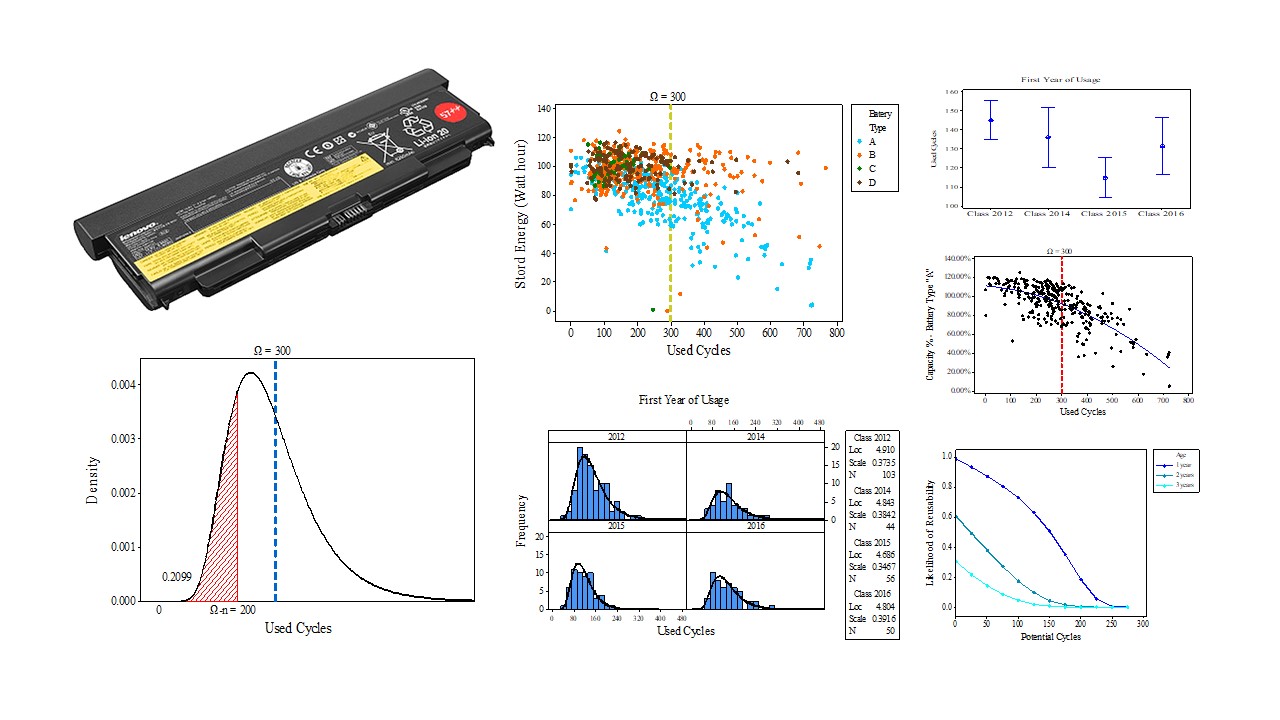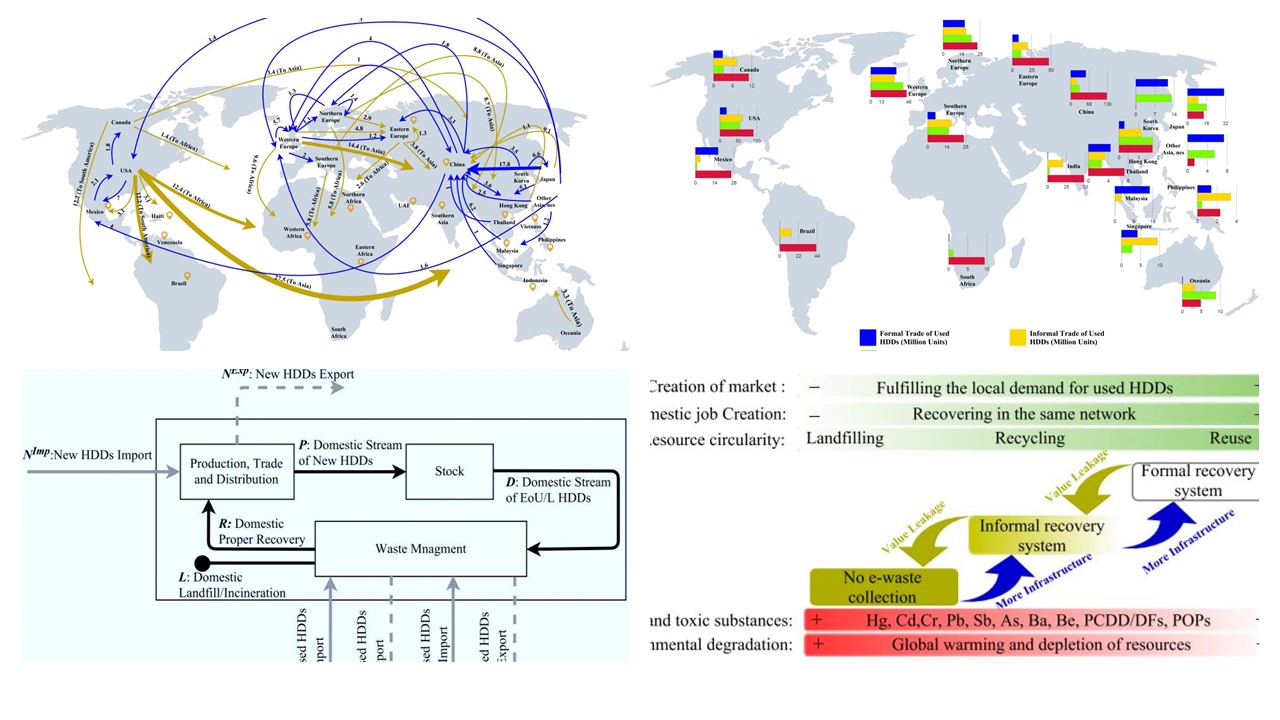Modeling the Impact of Product Middle-of-Life Data on End-of-Life Recovery Decisions
This project develops a decision-making framework for improving product end-of-use (EOU) recovery by using the middle-of-life product data. It consists of three key stages: data collection from consumer usage, data analytics for evaluating future product reusability, and decision-making techniques to identify optimal EOU options such as reuse, recycle, and refurbish. The main focus is on lithium-ion laptop batteries and HDDs to predict component reusability and optimize EOU decisions. The objective is to incorporate consumer behavior and product usage patterns into remanufacturing decisions.

Optimizing the Recovery of Value from End-of-Use Hard Disk Drives
This project addresses the challenge of optimally recovering the remaining value from end-of-use/life hard disk drives (EoU/L HDDs). The research investigates the global patterns of HDD shipments, both new and used, between developed and developing regions and quantifies the value lost through inadequate recovery processes. It conducts two main analyses: quantifying the global loss of value due to insufficient recovery of neodymium (Nd), a critical material in HDDs, and capturing the value leakage resulting from delays in the timely reuse of HDDs.

Remediating E-waste Problems by Considering Consumer Consumption Behavior in Design for Multiple Life Cycles and Design for Ease of Return
This research, supported by the NSF Grant Opportunity for Academic Liaison with Industry (GOALI), aims to mitigate the e-waste crisis through sustainable design practices. The research has two main objectives: to better understand how consumer consumption behavior and manufacturers’ design decisions influence the volume of electronics discarded each year and to develop advanced design evaluation methods to create products that are easy to repair and recycle. Design for multiple life cycles considers the preferences of various stakeholders early in the product design phase, and design for ease of return aims to make products more recyclable and easier to collect. The project advances methodologies in consumer behavior and product design to reduce the environmental impact of discarded electronics.
